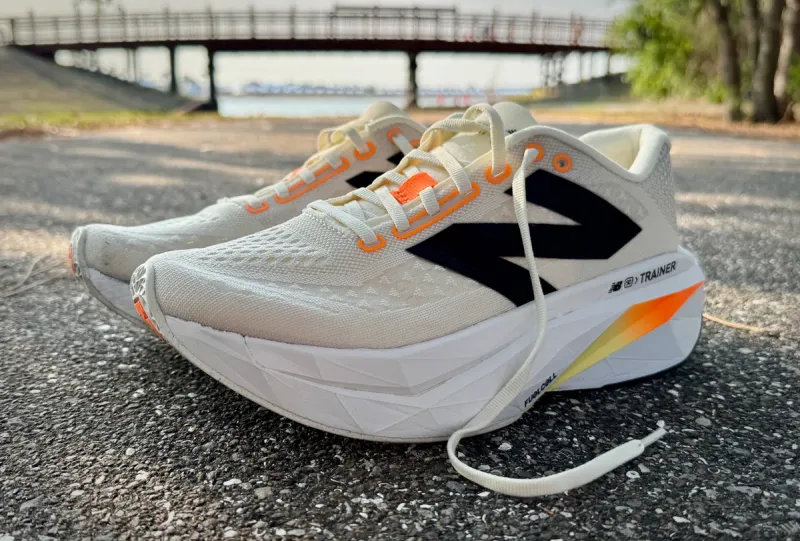The Brooks Catamount 3 trail running shoes are designed for runners tackling distances between 50 to 100 km, but how do they perform on a wide variety of terrain, climbs, descents, are they actually suitable for ultra running, and ultimately, are they worth the $170 price tag?
Well, I’ve done the real world testing required to determine how they perform, on some of the most epic trails in Northern California, and these are my thoughts/results.
Right out of the box, the Brooks Catamount 3 feels super comfortable, and look great, in my opinion.

They have a firm midsole, offering the responsiveness and control you need on the trails, especially if you’re racing but I was keen to see how they felt over longer distances in terms of cushioning and comfort.
Before I get into my Brooks Catamount 3 review (in-depth performance review), here’s a breakdown of the key specifications/features worth knowing about.
Key specifications
- Price: $170 at Brooksrunning.com / REI.com / Sportsshoes.com (UK)
- Fit: True to size with a medium width and an airy toe box suitable for wide toes
- Upper: Engineered mesh with added durability in high-wear areas
- Lacing System: Notched laces for secure fit
- Midsole: Nitrogen-infused DNA Flash foam midsole with a SkyVault Trail plate for energy return and protection
- Outsole: Trail Tack green rubber (provides excellent traction)
- Drop: 6mm from heel to toe
- Weight: 9.1oz (258g) for a US men’s size 9
Brooks Catamount 3 performance review
To make sure this review is in-depth and so you know I actually run in the shoes we review, you can also watch my performance video review by tapping the image below – Don’t forget to subscribe to the Alastair Running Youtube Channel so you don’t miss reviews :).

Comfort and fit
The Brooks Catamount 3 fits true to size, with a medium width that accommodates most foot shapes.
The toe box is nice and airy too, which provides ample room for wider toes or those who simply prefer more space in the forefoot to allow for toe slay when running, for proper biomechanics and more comfort over longer distances – this is something that Altra does really well.
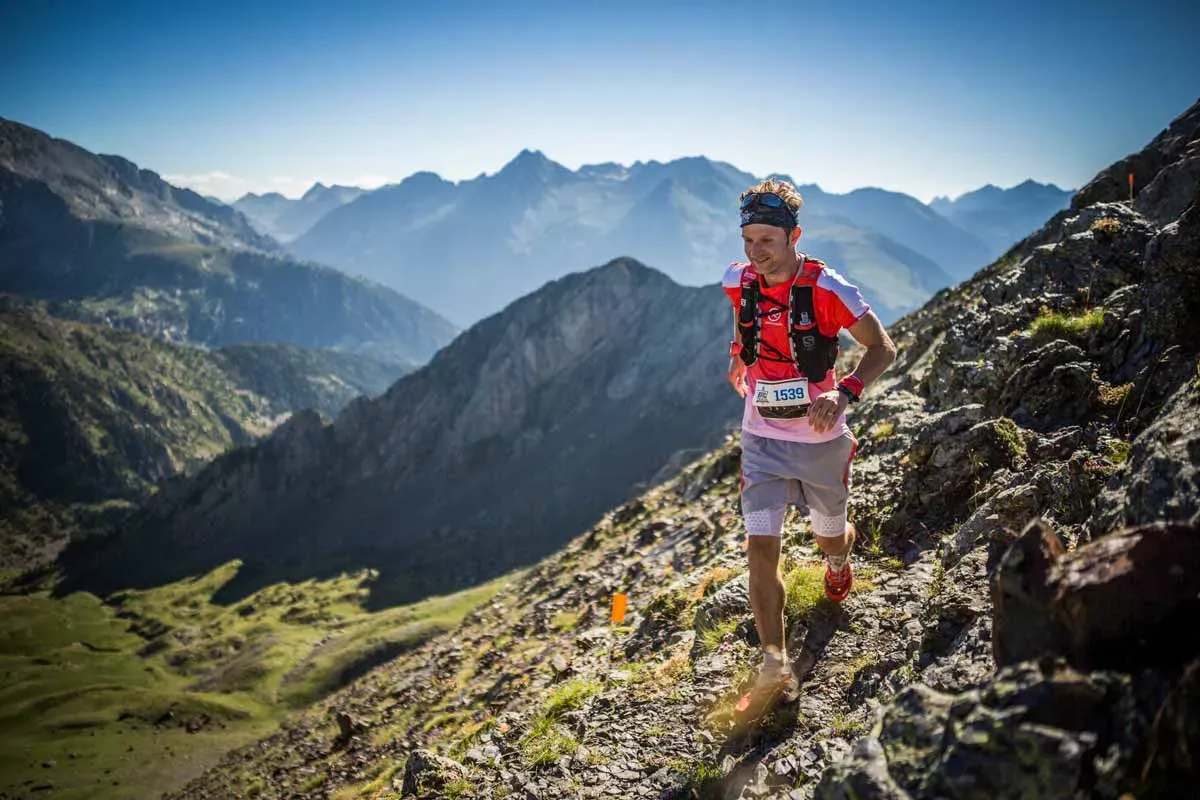
The engineered mesh upper is both durable and breathable, ensuring your feet stay cool and comfortable even during intense efforts of climbing or reaching top speeds on downhill gradients and flats.

To further enhance durability, Brooks has added protective overlays in high-wear areas, such as the toe box, or more specifically, above your big toe, where it’s most needed.
These overlays prevent the dreaded toe poke-through, a common issue for some trail runners.
The lacing system is using notched laces, similar to those found in Nike’s Vaporfly 3 and Alphafly 3 models.
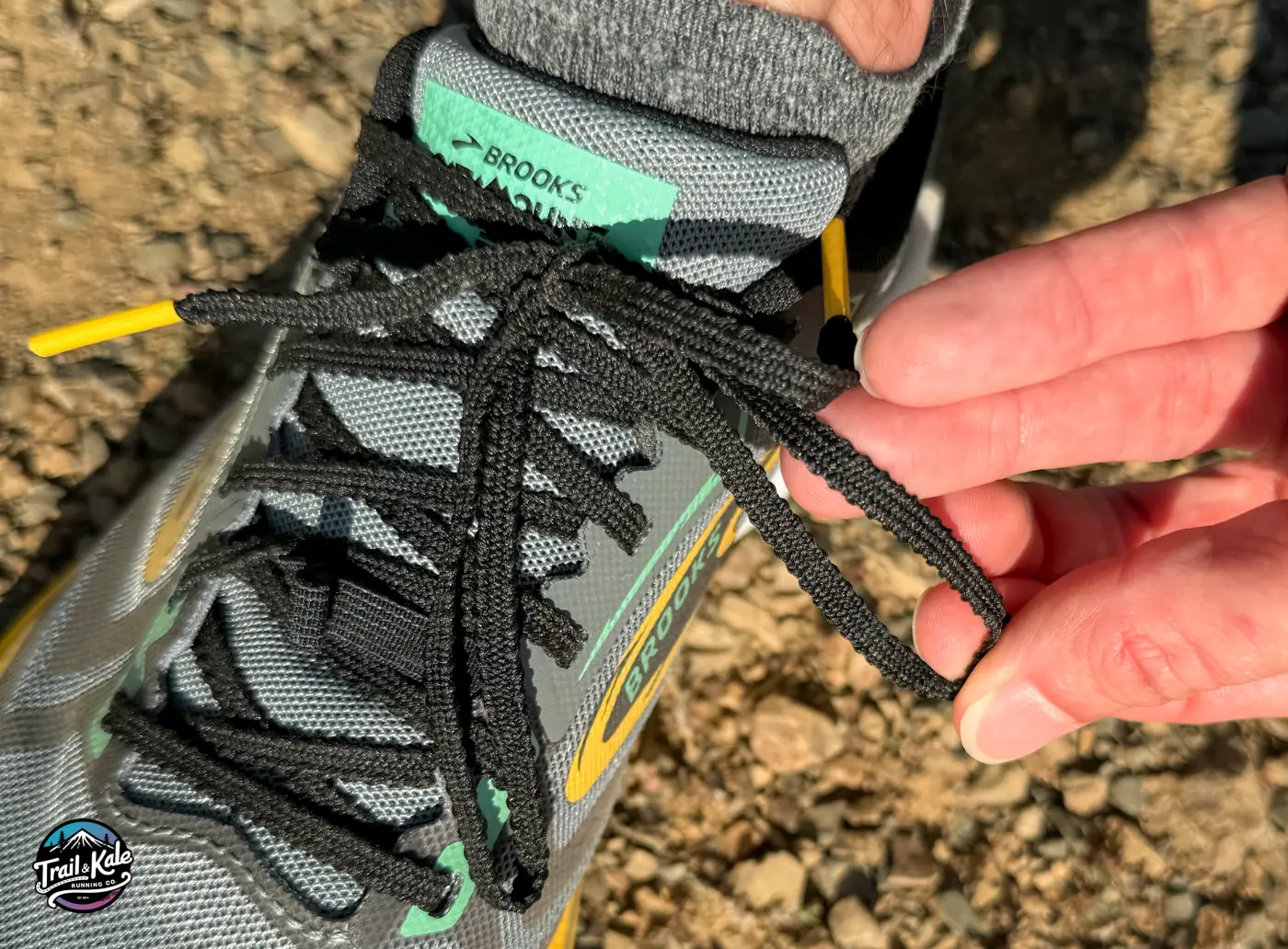
What I like about these laces is how well they stay securely tied, reducing the chance of them coming undone mid-run.
Additionally, the padded tongue and collar provide a cushioned feel around the ankle, while the low-profile collar design prevents any annoying rubbing on your Achilles tendon.
Performance on climbs
When it comes to climbing, the Brooks Catamount 3 really excels for me; the combination of the nitrogen-infused DNA Flash foam midsole and the SkyVault Trail plate makes these shoes incredibly responsive and efficient.
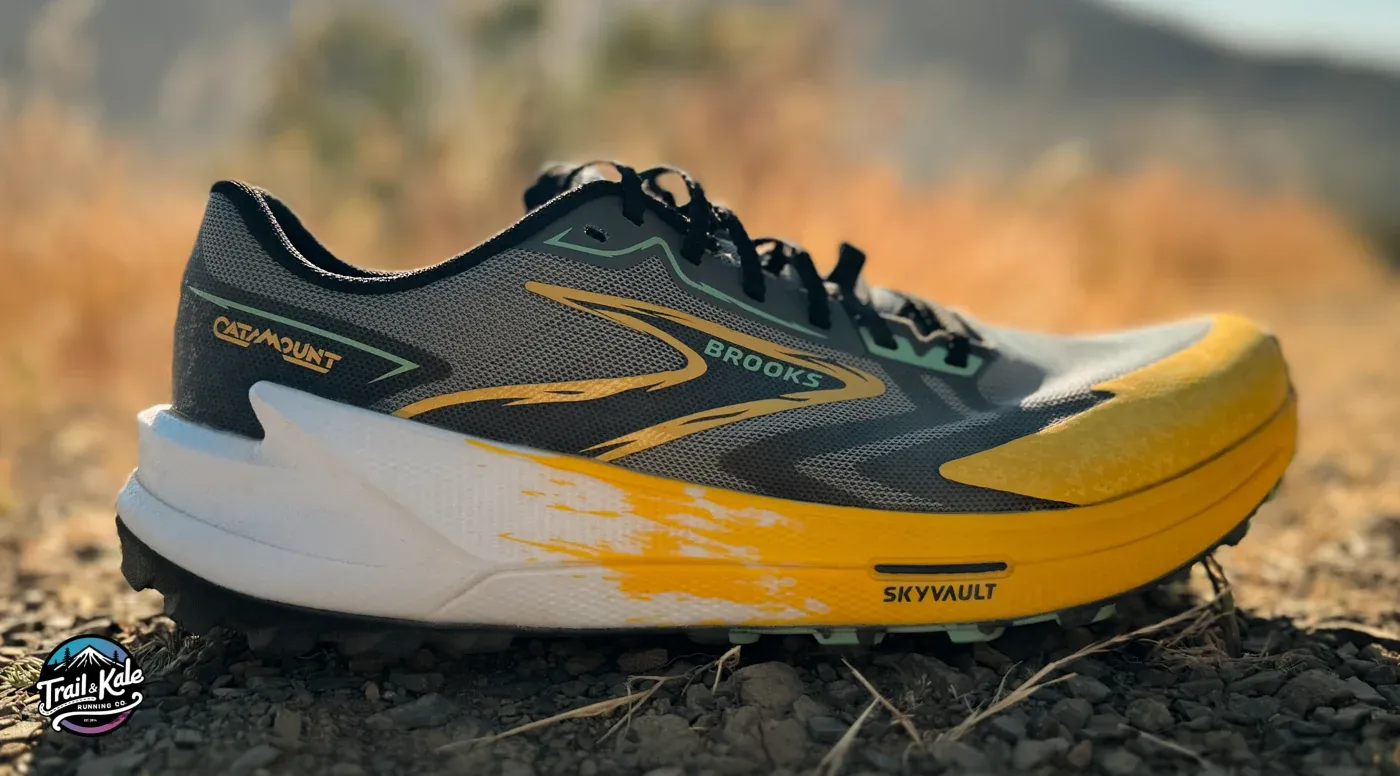
The midsole offers a springy ride, helping you power up steep inclines more easily than without a plate like this.
The SkyVault plate also adds just the right amount of flex, allowing for a smooth transition and forward propulsion without feeling overly stiff.
That excessive ‘stiffness’ can be an issue I’ve noticed on some other race day trail shoes that use a carbon fiber plate, which doesn’t flex as readily as this Brooks SkyVault plate.
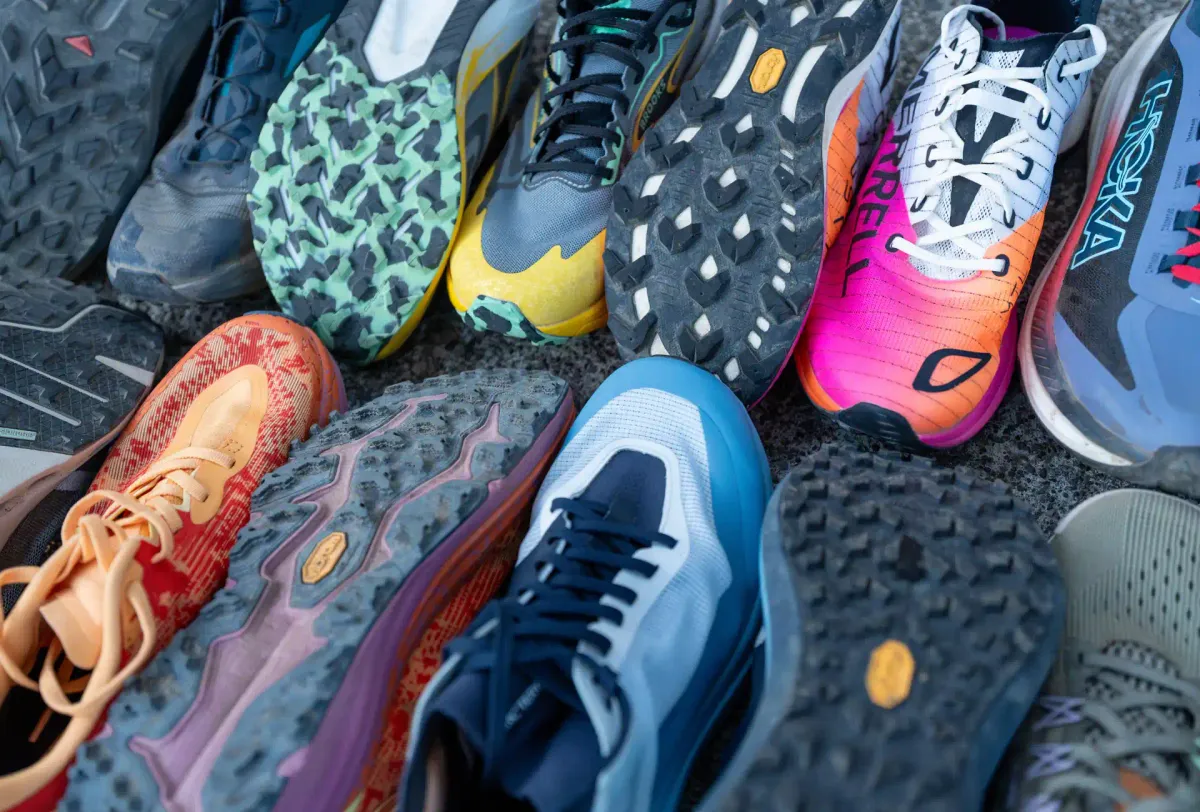
The outsole traction is also a key player on climbs thanks to the Trail Tack green rubber compound with strategic lug formations whereby the lug creep right up to the toe, wrapping around it, where you need traction the most on steep climbs.

I feel secure on various incline gradients, and the upper construction holds my feet firmly in place, eliminating any heel slippage that can be an issue on other trail shoes that contributes to a loss in performance when ascending.
Performance on flat sections
The Catamount 3 performs well on flat sections too, in large due to the responsive DNA Flash foam that encourages a quicker cadence, making it easier to maintain speed and efficiency.
This midsole’s firm yet springy nature means you get excellent energy return with each stride, which is critical for maintaining momentum on flatter terrain.
The shoe’s overall lightweight design, at 9.1 oz for a US men’s size 9, adds to the feeling of agility and speed.
You don’t feel weighed down, allowing you to focus on maintaining a smooth and fast pace – this is especially noticeable on long gruelling climbs. The roomy toe box also contributes to comfort on flat sections, as your toes can move freely without feeling cramped.
Performance on the downhills
Descending can often be a challenge, but the Brooks Catamount 3 handles technical downhills with ease.
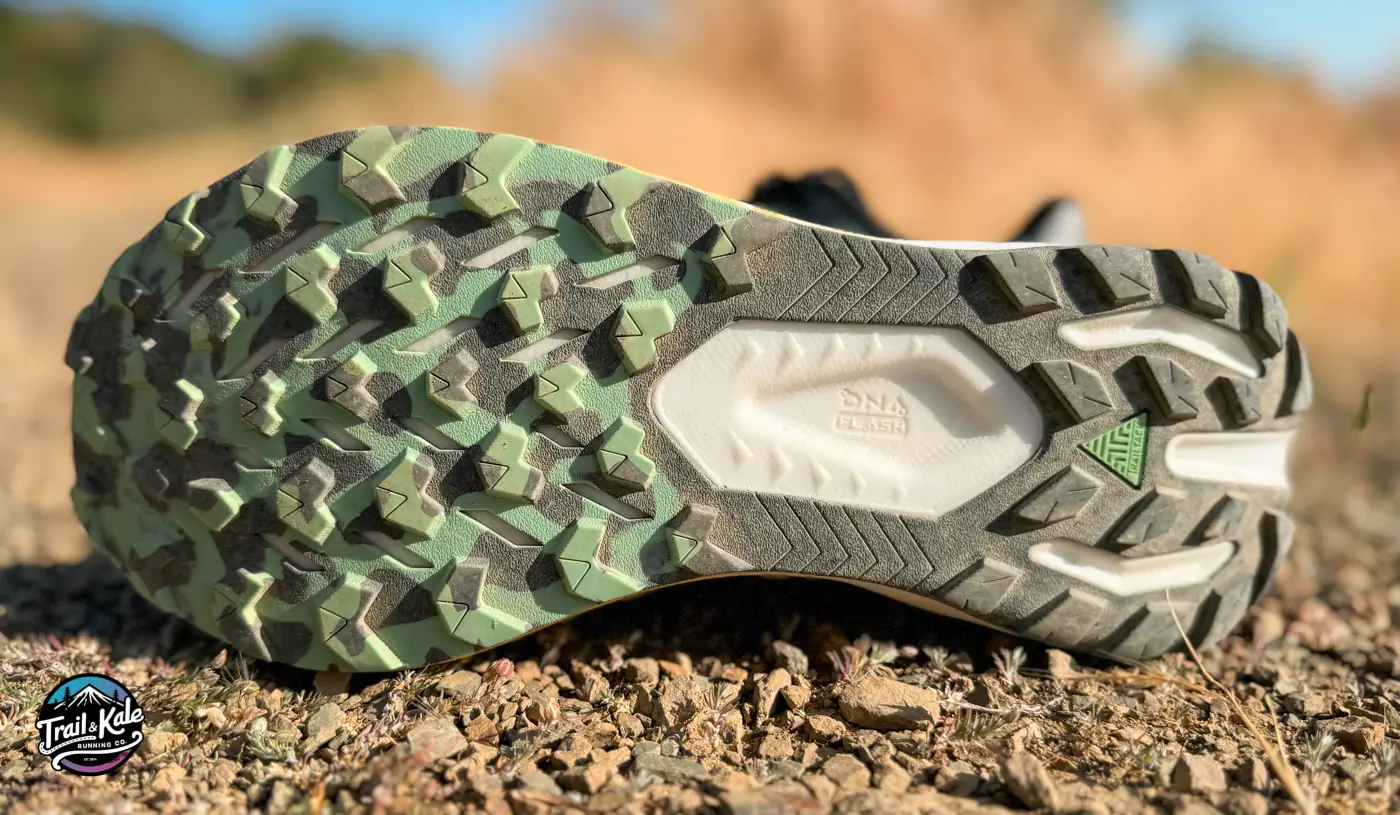
The traction provided by the Trail Tack outsole ensures you remain stable and secure, even on loose or rocky descents which I have alot of on my local routes.
The lugs, while not overly aggressive, are sufficient to grip the trail and prevent slips, and dare I say it, this outsole rubber compound performs pretty much on par with Vibram Megagrip in my tests.
The SkyVault plate, while offering flexibility on climbs, also provides a good level of stability on downhills. It protects your feet from sharp rocks and roots, acting as a rock plate and giving you confidence to tackle technical descents.
Despite being a neutral trail running shoe with no additional support for pronation issues, the Catamount 3 feels remarkably stable, reducing the risk of ankle rolls, I put this down to the SkyVault plate.
The midsole’s responsive nature allows for quick reactions to changing terrain, and the foam adapts well to different surfaces, maintaining control and comfort.
Even on steep and fast descents, the Catamount 3 delivers a smooth and controlled ride, making downhill running a joy rather than a challenge.
Suitability for different types of runners
The Catamount 3 is best suited to runners who enjoy a responsive, firm ride and like to tackle mixed terrains.
It excels on climbs and technical trails, but might feel too firm on long stretches of asphalt or hard ground trails. If you’re a fan of Brooks or looking for a reliable all-mountain trail shoe for distances up to 50 km, this is a really solid choice.
Are they worth buying?
And so we’ve reached the ultimate questions in this review; is the Brooks Catamount 3 worth $170? Absolutely, it is!
This shoe offers great value with their durability, performance, and responsiveness.
It’s a fantastic choice for trail runners looking for a reliable shoe that can handle a variety of terrains and weather conditions. So, if you’ve read this review and think it might be for you, I highly recommend giving the Catamount 3 a try.
You can pick up a pair today from the following trusted online retailers:
$170 at Brooksrunning.com / REI.com / Sportsshoes.com (UK)
Thanks for reading, and happy trails! -Alastair







